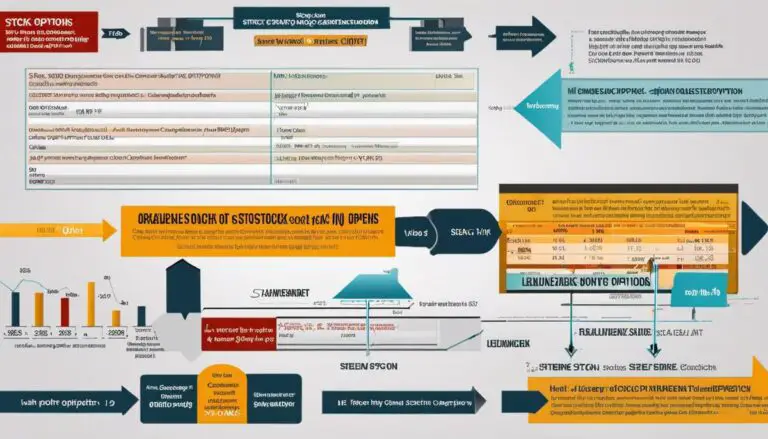When it comes to navigating the currents of the stock market, understanding the role of taxes is as crucial as knowing the ebbs and flows of market trends. Taxes are an inevitable part of financial life, and when it comes to stock investments, they can significantly shape your returns. This essay embarks on an informative journey that demystifies the tax landscape for stock investors. From untangling the complexities of capital gains tax and its implications for both short-term trades and long-term investments to unraveling the distinct tax characteristics of different investment account types, this exploration is designed to arm investors with the essential knowledge to make tax-aware investment decisions. As dividends become a source of income for many, comprehending their tax treatment becomes all the more important. Additionally, staying attuned to the latest tax legislation proves indispensable for the forward-thinking investor looking to optimize after-tax performance. The strategies for tax planning discussed herein are not mere suggestions; they are powerful tools that, when used wisely, can enhance the profitability of your portfolio and secure your financial future.
Understanding Capital Gains Tax
How Capital Gains Tax Shapes Astute Stock Investment Tactics
In the chessboard of stock investments, where every move can tip the scales of profit and loss, capital gains tax acts as a formidable player influencing stratagem and timing. Shrewd investors understand not only the markets but also how the long arm of taxation can reach into portfolios, necessitating tactics that maximize returns while minimizing tax burdens.
Understanding the Tax Impact
Firstly, it’s critical to distinguish between short-term and long-term capital gains. Stocks held for less than a year fall into the former category—taxed as ordinary income at rates that can climb the tax bracket ladder precipitously. Conversely, long-term gains enjoy preferential treatment, with rates that are markedly lower, rewarding the patient investor. This disparity in rates lays the groundwork for a key strategy: holding stocks for at least one year to secure a reduced tax rate.
Harvesting Losses to Offset Gains
The astute investor leverages a second tactic known as tax-loss harvesting. By selling underperforming stocks at a loss, one can offset the gains earned elsewhere in their portfolio. This meticulous balancing act isn’t merely about cutting loose the dead weight; it’s about strategic timing and reallocation that aligns with tax efficiency and long-term growth.
Betting on Opportunity Zones for Tax Efficiency
A trendsetting move on the tax planning front is investing in Opportunity Zones. Designed to spur economic growth in designated areas, these investments can defer and potentially reduce capital gains taxes. For the forward-thinking investor, this transcends tax strategy—it’s a fusion of savvy planning and social impact investing.
Roth IRA: The Tax-Free Growth Powerhouse
Pivoting to retirement strategies, the Roth IRA stands as a titan for tax-free growth. While contributions are made with after-tax dollars, the magic occurs as investments appreciate free from capital gains tax, a prize for future retirees. Thus, sprinkling a Roth IRA into a diversified portfolio aligns with both retirement and tax minimization strategies.
Considering the Probable Policy Shifts
In the perpetual ebb and flow of policy and regulation, the future may hold shifts in capital gains tax rates or rules. Visionary investors stay ahead of the curve, remaining informed not only about current legislation but also about potential changes on the horizon. A nimble strategy can adapt to policy modifications, safeguarding one’s investment approach against disruptive tax changes.
Integrating into a Cohesive Strategy
In conclusion, capital gains tax is not a mere afterthought—it is a pivotal concern for the well-informed stock investor. It incites the deployment of hold strategies, the astute realization of losses, investments with tax incentives, and retirement planning that hinges on tax-exempt growth. It’s a juggernaut that savvy investors embrace and strategize around, not just at year’s end, but as an integrated, ongoing approach to the craft of investing.
In the parlance of investment enlightenment, knowledge of tax implications empowers investors to steer their stock portfolios with perspicacity. Always remember: in the world of stock investments, the judicious evaluation of capital gains tax is not just about how much you make—it is unequivocally about how much of that gain you keep.

Tax-Efficient Investment Accounts
Maximize Your Returns: Savvy Investment Accounts for Stock Investors Seeking Tax Advantages
The seasoned investor knows that optimizing the tax efficiency of a portfolio is as crucial as selecting the right stocks. Taxes can devour gains if not managed strategically, and smart account choices are foundational to keeping more of those hard-earned dollars.
For the astute stock investor, a 401(k) or similar employer-sponsored retirement plan presents a prime opportunity for tax-deferred growth. Contributions reduce taxable income up front, allowing investments to compound over time without the drag of taxes. Moreover, employers often match a portion of these contributions, adding extra firepower to the portfolio’s growth potential.
For high net-worth individuals, a Health Savings Account (HSA) offers a triple tax bonanza that’s hard to ignore. Contributions are tax-deductible, grow tax-free, and withdrawals for qualified medical expenses aren’t taxed. Astute investors use this to their advantage, because after turning 65, HSA funds can be withdrawn for any purpose without penalty, only paying ordinary income tax.
Self-employed magnates and small business owners have the ability to set up a Simplified Employee Pension (SEP) IRA or Solo 401(k), which permit larger contributions than traditional IRAs or Roth IRAs. These accounts facilitate pre-tax contributions, growing tax-deferred until retirement – a substantial boon for those looking to aggressively save.
Then there’s the stealthy power of the 529 College Savings Plan. Though not directly for stock investing, this vehicle allows for stock investment within it, offering tax-free growth and withdrawals for qualified education expenses. A strategic play for those planning to financially support a child’s or grandchild’s education while optimizing their own investment strategy.
Lastly, let’s not overlook charitable strategies. For those philanthropically inclined, a Donor-Advised Fund (DAF) offers immediate tax deductions for contributions and the ability to advise grants over time. If you’re planning to support charitable causes, why not do so while optimizing the tax implications of your investment portfolio?
Aligning investment strategy with the right tax-advantaged accounts is not just a wise move – it’s a necessary one for those seeking to maximize their financial potency in the stock market. With these vehicles, the informed investor crafts a roadmap to a more robust portfolio and steers clear from the often-overlooked tax pitfalls that can thwart progress. Choose wisely, invest shrewdly, and watch your empire grow, with the taxman at a safe and strategic distance.

Dividends and Taxation
When Dividends Make Cents: Navigating Taxation on Stock Dividends for the Astute Investor
The savvy investor knows the importance of understanding every facet of their portfolio, particularly when it comes to dividends – a significant source of income that can shape the efficiency and profitability of an investment strategy.
What many don’t consider is the tax treatment of these dividends, which can significantly alter net returns. Are they qualified or non-qualified? The distinction is crucial. Qualified dividends enjoy the favorable long-term capital gains tax rates, provided the underlying stocks are held for a specific period – more than 60 days during the 121-day period that begins 60 days before the ex-dividend date. This period ensures we’re investing, not just for yields but for favorable tax rates.
Non-qualified, or ordinary, dividends, on the other hand, are taxed at the higher ordinary income rates. Every quarter, when dividends post to your account, be mindful: the type of dividend impacts your after-tax return on investment.
For those with international diversification in their portfolios, foreign dividend tax is another wrinkle to iron out. The U.S. already has a hefty tax bill, but many countries withhold taxes on dividends paid out by their companies. However, fear not – the foreign tax credit comes to the rescue for investors, potentially recouping some of these paid taxes.
When considering dividend reinvestment plans (DRIPs), remember – even if you don’t ‘cash-in’ the dividends, but instead, use them to purchase more shares, they are still subject to tax. Building an ever-expanding portfolio should be balanced with the tax costs incurred through reinvestment to avoid a compounding tax liability.
Investors nestled comfortably in real estate investment trusts (REITs) must also face the reality of taxation. Often, REIT dividends are taxed as ordinary income, given these dividends are not qualified, due to the special tax treatment REITs receive on their profits.
Finally, as savvy investors always have their ear to the ground for the next big innovation, one must also be alert to changing tax laws, which can reshape the approach to stock dividends overnight. Federal tax reform continues to be a game of chess that requires strategic positioning to anticipate changes and adapt quickly.
In summary, dividends are not just figures on a balance sheet—they are dynamic elements of one’s investment portfolio that must be managed with tax considerations at the forefront. Whether your dividends are qualified or non-qualified, domestic, or international, part of a reinvestment plan, or apart of niche investments like REITs, the tax implications dictate the true value of your dividends.
Stay informed, stay strategic, and let tax planning be a driver, not an afterthought, in the pursuit of investment success.

Impact of Tax Legislation on Stock Investing
Capitalizing on the Dividend Effect: Navigating Tax Concerns for Astute Investors
In the world of stock investments, dividends present a golden opportunity for savvy investors looking to enhance their portfolios. However, navigating the complexities of tax treatment on dividends is paramount to ensure that these investments work effectively toward wealth accumulation.
When talking about dividends, distinguishing between qualified and non-qualified varieties is crucial. Qualified dividends enjoy a favored tax rate, reflecting the long-term capital gains rates, whereas their non-qualified counterparts are taxed at the ordinary income tax rates. Discerning investors appreciate that this difference can significantly affect after-tax returns. Therefore, it’s vital to adhere to the holding period requirements that dictate the favorable tax treatment for qualified dividends.
The holding period is the linchpin for capitalizing on the derived tax advantages. Investors aiming for qualified status need to hold the underlying stock for more than 60 days during the 121-day period that begins 60 days before the ex-dividend date. This prerequisite mandates precision and a proactive approach in portfolio management.
When scrutinizing after-tax return on investment, astute investors recognize the impact of dividend types. Qualified dividends promote a more tax-effective income strategy, maximizing the investor’s net earnings due to their comparatively lower tax rates. On the other hand, non-qualified dividends require strategic planning and a deeper analysis of whether the higher tax hit justifies the investment.
International investing brings additional tax considerations. Dividends from foreign corporations present an opportunity for an offset through the foreign tax credit, minimizing the tax burden and preventing double taxation. It is a nuance that global investors leverage, using the credit to enhance the tax efficiency of foreign dividend-paying stocks.
For investors capitalizing on Dividend Reinvestment Plans (DRIPs), it’s important to recognize that reinvested dividends are not a tax-free perk—they’re subject to taxation just as if they were received in cash. Hence, understanding the implications on annual tax returns is essential.
Regarding Real Estate Investment Trusts (REITs), investors are keenly aware that dividends often come structured differently. The non-qualified dividend status of most REIT payouts necessitates a different tax strategy, considering their full taxation at ordinary income rates.
Adaptability reigns supreme in the financial world, especially concerning evolving tax legislation. Staying alert to changes in tax laws is not just advisable; it is a requirement for those who wish to stay ahead. Today’s advantageous tax policy could shift tomorrow, disrupting investment strategies.
Finally, tax planning deserves a critical seat at the table in any conversation about investment success. The interplay between investment decisions and tax obligations requires thoughtful synchronization. Advance planning and constant review of tax-efficiency measures are hallmarks of adept investors who consistently outrank their complacent counterparts.
In conclusion, dividends are a powerful tool in an investor’s arsenal, but they must be wielded with a thorough understanding of tax implications to yield the best financial outcomes. As always, it is wise for investors to consult with tax professionals to tailor a dividend-investment strategy that aligns with individual financial goals and the ever-shifting tax landscape.

Tax Planning Strategies for Investors
In an ever-evolving financial landscape where astute investors stay ahead of the curve, a critical aspect often overlooked is the strategic use of gift and estate tax exemptions in the realm of stock investment portfolios. The lifetime gift and estate tax exemption offers a golden opportunity to transfer appreciating stocks to heirs with minimal tax implications, a move that should be at the forefront for savvy investors aiming to preserve wealth across generations.
Moreover, for those at the helm of their financial voyage, it becomes essential to dive into the intricate world of stock options. When employed judiciously, stock options such as Incentive Stock Options (ISOs) can be a powerful tool to optimize stock investments for tax purposes. The key lies in the timing of the exercise and sale of ISOs, where the alignment with the Alternative Minimum Tax (AMT) requirements can yield significant tax benefits.
Another domain that smart investors have their eye on is the Qualified Small Business Stock (QSBS) exclusion. For those investing in or running qualifying small businesses, the QSBS provides an avenue to potentially exclude up to 100% of capital gains from taxation. This under-the-radar tactic can supercharge an investment portfolio if leveraged with finesse and forward-thinking.
As the gulf widens between traditional investment wisdom and contemporary fiscal agility, the conversation would be remiss without mentioning the strategic use of trusts. Vehicles such as Grantor Retained Annuity Trusts (GRATs) and Intentionally Defective Grantor Trusts (IDGTs) provide sophisticated platforms to transfer stock investments in a tax-efficient manner. With the correct setup, one can move significant wealth virtually tax-free, particularly with assets expected to appreciate over time.
For the high-caliber investor, it’s not just about riding the highs and weathering the lows of the market; it’s about constructing a financially impenetrable fortress through meticulous and informed tax planning strategies. As market tides shift and new reforms loom, aligning with financial experts who deftly navigate the convoluted tax realm is not just prudent—it’s a non-negotiable.
Now, to encapsulate the essence of tax planning for stock investments, remember, only those willing to pierce through the veil of complexity and harness the power of strategic tax planning will realize the full potential of their stock portfolios. The quest for tax optimization in stock investments is not a passive journey; it’s an unrelenting pursuit of fiscal excellence.

Mastering the intricacies of tax implications on stock investments is a formidable yet rewarding endeavor. With each strategy delineated throughout this essay, from employing tax-loss harvesting to understanding the impact of tax-efficient accounts, a clearer picture emerges for the investor seeking to optimize their financial outcomes. Navigating the labyrinth of tax laws and employing effective tax planning techniques enables savvy investors to not only fortify their portfolios against unnecessary tax liabilities but also to harvest the rewards of prudent financial stewardship. As the journey of investment continues, may this comprehensive guide serve as a beacon, illuminating the path to a more informed and strategic approach to growing and preserving wealth in the ever-evolving world of stock investing.



